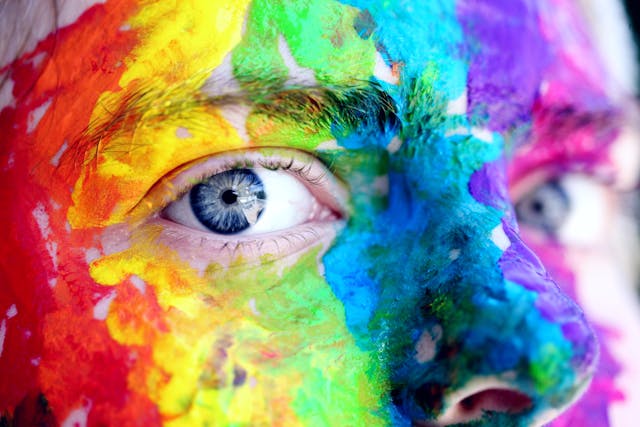How AI Is Redefining Art and Design

Artificial intelligence (AI) is revolutionizing industries across the board, and art and design are no exceptions. From generating stunning digital paintings to assisting designers in crafting innovative products, AI is changing how we create, experience, and interact with visual media.
Table of Contents
This article explores how AI is redefining art and design, its applications, the tools driving these changes, and the challenges and opportunities it brings for creators and audiences alike.
What Is AI in Art and Design?
AI in art and design involves the use of algorithms, machine learning models, and neural networks to automate or augment the creative process.
How It Works
- Generative AI: Uses algorithms like GANs (Generative Adversarial Networks) to create new images, videos, or designs based on input data.
- Predictive Modeling: AI analyzes trends and user behavior to suggest design elements or artistic styles.
- Automation: Simplifies repetitive tasks, freeing creators to focus on conceptual aspects.
Why It Matters
- Accessibility: Lowers barriers to entry for aspiring artists and designers.
- Innovation: Encourages exploration of new styles and techniques.
- Efficiency: Speeds up workflows and enhances productivity.
AI’s Impact on Art
AI is not only a tool but a collaborator, reshaping the way art is conceptualized and created.
1. Generative Art
AI can create original works of art, often indistinguishable from those crafted by humans.
- Examples: AI-generated portraits, abstract visuals, and landscapes.
- Tools: DALL·E, Artbreeder, and DeepArt.
2. Style Transfer
AI allows artists to apply the style of famous painters or unique aesthetics to existing images.
- How It Works: Neural networks analyze the style of a reference image and replicate it on another.
- Use Cases: Transforming photos into Van Gogh-like paintings or Picasso-inspired abstracts.
3. Interactive Art
AI creates dynamic art that responds to user interactions or environmental changes.
- Examples: Installations that change based on audience movement or mood detection.
- Notable Projects: Refik Anadol’s data-driven installations.
4. Music and Audio Art
AI assists in composing music, generating soundscapes, or even creating entire albums.
- Popular Tools: OpenAI’s MuseNet, Amper Music.
AI’s Role in Design
AI is equally transformative in design, offering tools and techniques that redefine how designers work.
1. Product Design
AI enhances the ideation and prototyping phases by analyzing user needs and predicting successful design elements.
- Applications: Furniture, vehicles, gadgets.
- Example: Autodesk’s generative design software.
2. Graphic Design
AI automates tasks like layout creation, font matching, and color suggestions.
- Popular Tools: Canva, Adobe Sensei.
3. UX/UI Design
AI improves user experiences by analyzing behavioral data to recommend intuitive layouts and interactions.
- How It’s Used: Personalizing website designs or optimizing app interfaces.
4. Fashion Design
AI predicts trends, generates clothing designs, and optimizes production.
- Example: Tools like AI-powered Stitch Fix provide personalized fashion recommendations.
AI-Powered Tools Transforming Art and Design
Here’s a look at some top AI tools making waves in the art and design industry:
- DALL·E 3: Generates surreal and hyper-realistic images from textual prompts.
- Runway ML: A creative toolkit for video editing, image manipulation, and design.
- Artbreeder: Allows users to create and edit images collaboratively using AI.
- DeepArt: Applies artistic styles to images using deep neural networks.
- Canva: Integrates AI for design suggestions and content creation.
- Adobe Sensei: Automates workflows across Adobe’s suite, from Photoshop to Illustrator.
How AI Benefits Artists and Designers
1. Enhanced Creativity
AI acts as a creative partner, suggesting ideas and pushing boundaries.
2. Time-Saving
Automating mundane tasks enables creators to focus on the core artistic process.
3. Accessibility
Novices can create professional-quality work without years of training.
4. Customization
AI offers tailored solutions based on user preferences or project requirements.
Challenges and Ethical Considerations
As transformative as AI is, it comes with its own set of challenges and ethical concerns.1. Authenticity and Ownership
Who owns AI-generated art—the algorithm’s creator, the user, or the AI itself?2. Job Displacement
AI may replace certain roles, especially in repetitive or entry-level design tasks.3. Bias in AI Models
AI’s outputs are only as unbiased as the data they’re trained on, leading to potential limitations in representation and inclusivity.4. Over-Reliance
Excessive dependence on AI might stifle original creativity and unique human expression.Future Trends: Where AI in Art and Design Is Headed
1. Hyper-Personalization
AI will enable fully customized designs tailored to individual users’ tastes and needs.
2. Collaborative Creativity
Expect more tools fostering human-AI collaboration rather than replacement.
3. AI as a Medium
AI-generated art may become a recognized genre, much like photography in its early days.
4. Blockchain and AI Art
The rise of NFTs (Non-Fungible Tokens) may integrate with AI-generated art to ensure authenticity and ownership.
Conclusion
AI is not just a tool but a catalyst reshaping the creative landscape. It empowers artists and designers, enhances accessibility, and challenges traditional notions of creativity. However, its adoption requires careful consideration of ethical implications and a commitment to preserving human creativity.
If you’re a creator curious about AI’s potential, there’s no better time to dive in and explore the limitless possibilities it offers.
